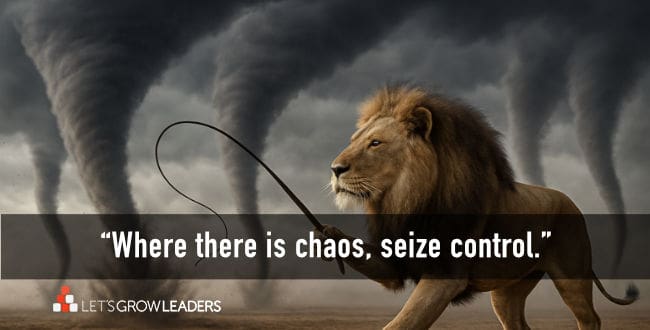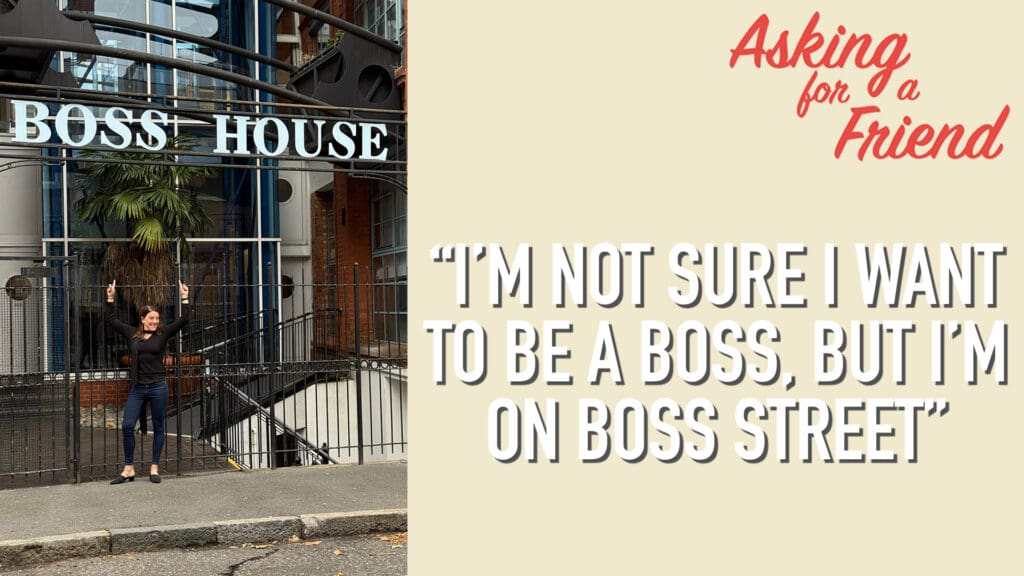Are you looking to help your team be more strategic? Are you frustrated because they just don’t get it? You’re not alone. The good news, is it’s a skill that can be taught and nurtured. Chances are most folks have a larger capacity for strategic thinking than their managers give them credit for.
John’s Story
John’s frustration had turned to exacerbation. He’d done everything he could to position himself for the next promotion. His results were amazing. He’d taken on several cross-functional projects and nailed those, too. He was delegating more and growing the competence of his team. He’d become far more open to feedback and had truly become a team player, even navigating the tricky inter-departmental dynamics. This time, the “I’m sorry, we’ve given the position to someone else” call ended with “We’re concerned about your ability to be strategic.” When he probed deeper for specifics, he didn’t get much of an answer.
John’s not alone. I’ve seen some great talent hit a wall with this “competency deficit.”
There’s no doubt that strategic thinking is vital. There’s strong evidence to support that strategic thinking is one of the most important executive competencies. In a recent HBR article, Robert Kabacoff shares his research of 60,000 managers in 40 countries.
We found that a strategic approach to leadership was, on average, 10 times more important to the perception of effectiveness than other behaviors studied. It was twice as important as communication (the second most important behavior) and almost 50 times more important than hands-on tactical behaviors. (This doesn’t mean that tactical behaviors aren’t important, but they don’t differentiate the highly effective leaders from everyone else.)
But it’s a mistake to view strategic thinking like handedness–you’re either born a lefty or a righty, and it’s really tough to change. Managers can learn to be more strategic through understanding, exposure and challenge. Resist the urge to label and box your talent and move on. Instead invest in your highly talented managers and teach them the art of strategy. It’s a win-win. The more people you have thinking strategically, even at the frontlines, the more innovative and dynamic your company will be.
How Help a Manager Become More Strategic
1. Define It
Help them visualize what you’re talking about. An easy to articulate definition comes from the Lominger Institute:
Can think and talk strategy with the best; intrigued and challenged by the complexity of the future; likes to run multiple “what if” scenarios; very broad perspective; counsels others on strategic issues; can juggle a lot of mental balls; isn’t afraid to engage in wild speculations about the future; can bring several unrelated streams of information together to form a compelling vision; good at meaning making; produces distinctive and winning strategies.
And then customize the definition for your industry.
For example, being able to think strategically in the high-tech industry involves a nuanced understanding of strategy topics such as network effects, platforms, and standards. In the utilities sector, it involves mastery of the economic implications of (and room for strategic maneuvers afforded by) the regulatory regime. In mining, leaders must understand the strategic implications of cost curves, game theory, and real-options valuation; further, they must know and be sensitive to the stakeholders in their regulatory and societal environment, many of whom can directly influence their opportunities to create value.
2. Provide Opportunities For Broad Exposure
It’s frustrating when I hear executives complaining about the lack of strategic thinkers in their organization, and yet they hold all the long-term vision close to the vest. Strategic thinking requires context. Do whatever you can to explain not only the vision and the direction but why those decisions are being made. A side effect that goes beyond more future leaders: stronger engagement and better decision-making down the line.
One of my favorite developmental activities is “bring a friend staff meetings,” where my direct reports could bring one high-potential manager to the table to experience the thought process. If your meetings are strategic, this is a real eye-opener. Oh yeah, and be sure to give the “friends” a few strategic action items for follow-up.
3. Move Them Around
Move your people around, particularly from line to staff and back. Sure, many high-potential folks hate lateral moves. It feels slow. Share the wisdom of going slow to go fast. Nothing beats building strategic mindset more than looking at the problem from multiple perspectives. Don’t limit it to the hi-po crowd, you may be amazed at what blossoms in a different role.
4. Think Out Loud
It’s easy, and perhaps even tempting, to take all the input, make the decision, look wise, and move on. That doesn’t build strategic thinkers. Slow down enough to explain your thought process as you make decisions. Use each major decision to catalyze strategic confidence and competence.
You can help your managers to be more strategic. We can help. Click here to learn more about our leadership training programs.







The leader must create an environment where constituents feel comfortable verbalizing their strategy.
Steve, Oh yes.. that’s such an important first step.
Great post, Karin!
I like this: “Move your people around.” This is a technique the FBI uses a lot—moving folks into and out of both comfortable and uncomfortable assignments. It increases the leader’s confidence level over time because, eventually, they move through the discomfort zone and gain competence in many areas.
It also stimulates strategic thinking because the bigger picture becomes more and more clear with each assignment….
Thanks, LaRae. Yeah, I was the poster child for being moved around… LOL… it’s scary, but it’s amazing what you can learn from walking in different shoes.
I agree that we want to empower our managers to be more strategic and yet we don’t always spend the time and mentor them to think that way. I love your idea of “bring a friend to staff meetings” as that shows managers how others process, make decisions and speak up.
I learned so much about strategic thinking by working with leaders who model accountability, visioning and relationship building. It’s the sharing piece that I think is most important. As you mention, some of the strategic thinking just comes with experience, exposure and opportunities.
Thanks Karin!
Terri, so agree. I think sometimes leaders are moving so fast they forget the value in thinking out loud and sharing their thought processes. Much can be gained from taking the time to do so.
Absolutely love strategic thinking requires context. I’ve worked in organizations where people brought forth ideas yet they were off base or band-aid solutions to larger problems that they were simply not exposed to! Leadership did such a great job at sheltering the team so they could stay heads down, they missed tapping into a pool of people who cared deeply about the business and wanted to learn to think strategically, but were told to keep a task focus.
Alli, You raise such an important point here… so much can be gained by going deeper and taping into the people who really care to improve the business. Thanks for expanding the conversation.
Karin – This is such an important post. I love your example and your suggestions. Giving high potential’s the opportunity to visualize, witness and experience “what could be” is huge!
Chery, Thanks so much. I think the sooner we can start all of this the better, even when “potential” is not completely clear,
Karin, what a timely article. I’ve been thinking more and more about strategy lately. I have a question about your comment: “It’s frustrating when I hear executives complaining about the lack of strategic thinkers in their organization, and yet they hold all the long-term vision close to the vest. Strategic thinking requires context.”
How have you seen non-executives approaching executives on this question? I periodically see people disappearing for “offsite meetings” and then the strategy comes back for execution.
Bruce, I see some organizations who involve more people and play it more open. And guess what, there’s so much more buy in when it comes time to implement the strategy. My experience has been that in cultures where strategy is done only behind closed doors, non-executives are also afraid to question it.